Introduction to Eyelid Surgery and Insurance Coverage
Eyelid surgery, or blepharoplasty, can be performed for cosmetic enhancement or medical reasons. Understanding when insurance covers this procedure is crucial for patients considering surgery. This article explores the criteria insurers use to determine coverage eligibility, the difference between cosmetic and medically necessary procedures, and the documentation required for approval. We focus primarily on upper eyelid surgery, as lower eyelid procedures are rarely covered by insurance. Our goal is to clarify how patients can navigate insurance policies and increase their chances of obtaining coverage for medically necessary blepharoplasty.
Defining Medical Necessity for Eyelid Surgery
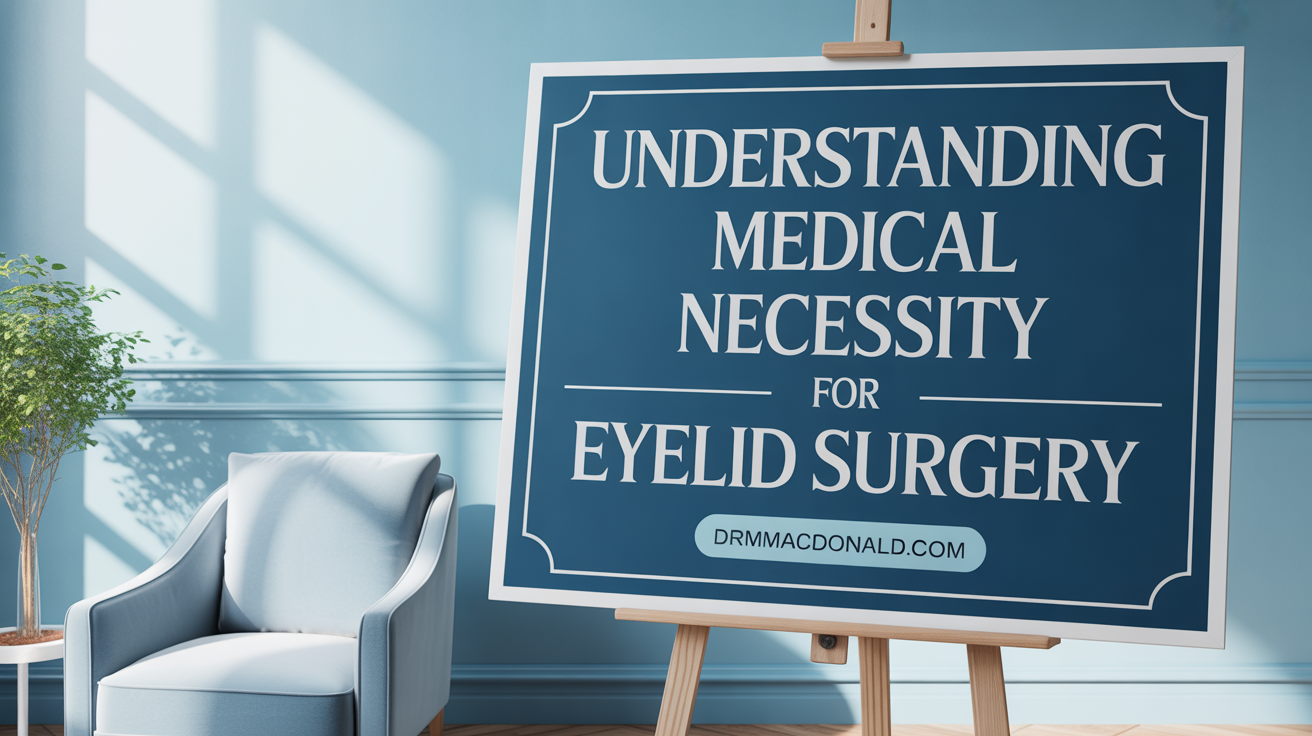
How do you know if eyelid surgery is medically necessary?
According to Dr. Wilson, indicators that suggest eyelid surgery may be necessary include difficulty seeing clearly due to drooping eyelids, using eyebrows excessively to lift eyelids, or needing to tilt or lift the head to see properly. These symptoms indicate that the eyelid drooping impacts vision significantly, and a detailed evaluation by an ophthalmologist is essential to determine whether surgery is justified.
What are the signs and symptoms indicating medical necessity?
Medically necessary eyelid surgeries typically involve conditions that impair function. Signs include obstructed or reduced visual fields, eyelid fatigue, eye discomfort, headaches caused by strain, or physical symptoms like eyelid entropion or tumors that compromise eye health. A visual field test showing at least a 50% or 12-degree reduction in the upper visual field often supports the need for surgery.
What conditions qualify for medically necessary eyelid surgery?
Conditions eligible for coverage include ptosis, where the eyelid droops and blocks vision, especially when impairing visual fields or causing symptoms like headaches or eye strain. Other scenarios include excess eyelid skin that obstructs vision, eyelid malpositions, trauma, tumors, Graves’ disease affecting eyelid function, chronic eyelid infections, congenital abnormalities, or eyelid deformities from injury.
Difference between cosmetic and medical reasons for surgery
The distinction lies in purpose. Medically necessary eyelid surgery aims to restore or improve eyelid function, alleviate symptoms, or prevent health complications. It addresses visual impairment or physical discomfort and is often covered by insurance. In contrast, cosmetic eyelid surgery focuses solely on appearance improvements without address of functional issues, and as such, is typically not covered by insurance.
| Criteria | Medical Necessity | Cosmetic Reasons | Documentation Required |
|---|---|---|---|
| Purpose | Improve vision or function | Enhance appearance | Medical reports, visual tests, photographs |
| Symptoms | Visual impairment, discomfort | Purely aesthetic concerns | Ophthalmologist evaluation |
| Coverage | Often covered if criteria met | Usually not covered | Insurance documentation and approval process |
| Conditions | Ptosis, excess skin impairing vision, trauma, tumors | Aging, cosmetic preference | Clinical findings, tests |
Understanding the difference helps determine eligibility for insurance coverage and guides patients through the process of obtaining necessary documentation to support their claim.
Criteria and Documentation Required for Insurance Coverage
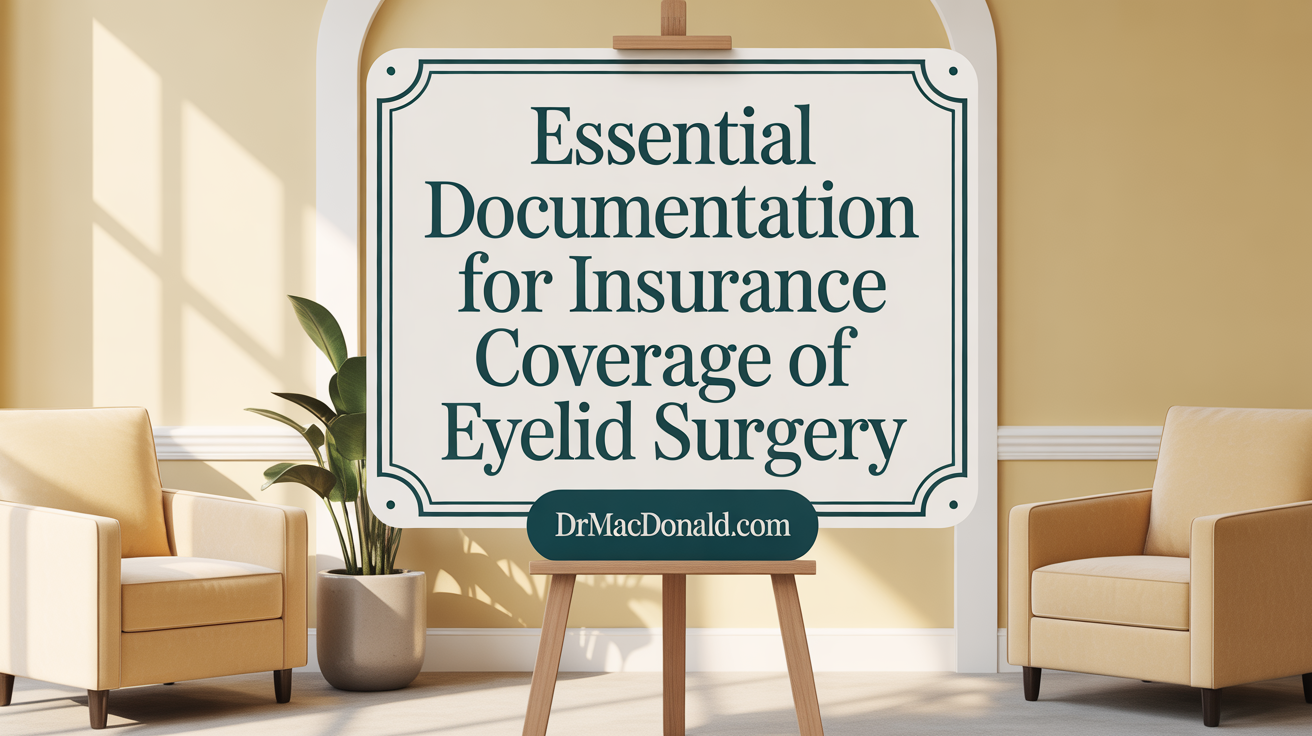
What documentation and eligibility requirements are needed for insurance reimbursement of eyelid surgery?
Insurance coverage for eyelid surgery, such as blepharoplasty, hinges on demonstrating that the procedure is medically necessary due to functional impairment, not purely cosmetic reasons. To qualify, patients must provide detailed documentation from a qualified ophthalmic or medical professional. This includes comprehensive physician notes describing the eyelid condition, clinical findings showing eyelid drooping or excess skin interfering with vision, and visual field tests showing at least a 12-degree or 30% reduction in the upper visual field.
Photographs taken by the healthcare provider are essential. These high-resolution images should show the eyelids within less than 2 millimeters of the pupil’s edge, highlighting the extent of drooping or abnormalities. The visual field test results must indicate a significant impairment directly attributable to eyelid issues.
Pre-authorization from the insurance provider is generally a necessary step. This process involves submitting medical records, test results, and supporting documentation to prove the surgery's medical urgency. The insurance company then evaluates these materials to decide if the procedure qualifies for coverage.
What should patients say or document to help qualify for eyelid surgery insurance coverage?
Patients seeking coverage should ensure their documentation clearly states that the eyelid condition impairs their vision and daily functioning. A report from an ophthalmologist should note the diagnosis of conditions like ptosis, with measurements indicating the degree of eyelid drooping.
It’s vital to include photographic evidence showing the eyelid’s position relative to the pupil, especially images captured with eyelids at rest and elevated or taped up to demonstrate the obstruction.
Furthermore, visual field testing results should clearly show the degree of field loss. At least a 12-degree or 30% reduction in the upper visual field, such as from drooping eyelids, qualifies for consideration.
Patients should also document any impact on daily activities—such as reading, driving, or working—and include complaints like eye strain, headaches, or eyelid fatigue. Combining these elements with thorough clinical notes enhances the likelihood of insurance approval.
Additional Resources
For detailed requirements, patients can search using the phrase "blepharoplasty insurance documentation requirements" to find specific guidelines provided by insurance providers or medical institutions.
Understanding these documentation needs and accurately reporting symptoms and clinical findings are critical steps to securing insurance coverage for medically necessary eyelid surgery.
Insurance Coverage Guidelines: When Is Upper Eyelid Surgery Covered?
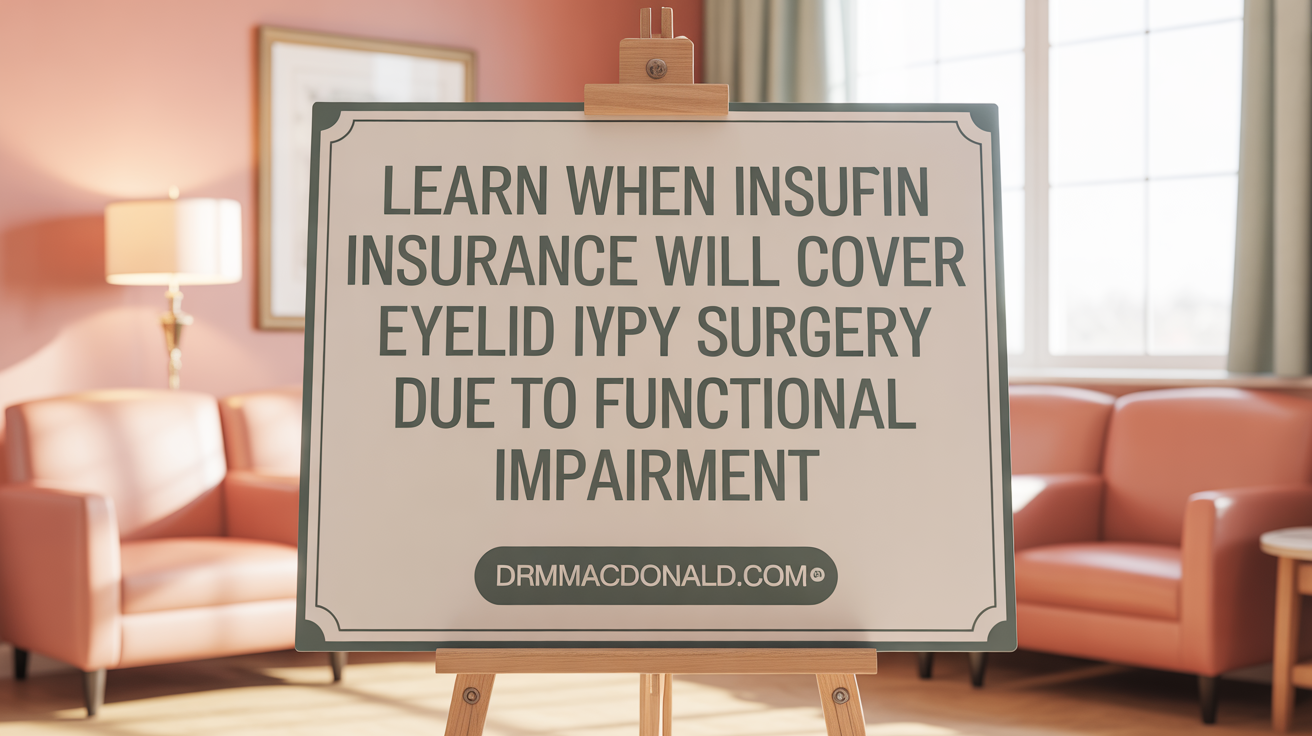
Functional impairment as coverage basis
Insurance providers primarily evaluate eyelid surgeries based on functional impairment rather than aesthetic concerns. This means that if drooping eyelids interfere with daily activities or cause health issues, coverage is more likely.
In particular, conditions like ptosis, where the eyelid droops enough to block part of the vision, qualify for coverage. The presence of symptoms such as eye strain, headaches, or difficulty reading or driving can support a claim for medically necessary surgery.
Visual field obstruction thresholds
To qualify for insurance coverage, there is usually a requirement for objective evidence demonstrating visual impairment. A visual field test conducted by an ophthalmologist can show if eyelid drooping reduces the upper visual field by at least 12 degrees or 30%, which is considered significant.
Patients must often demonstrate this impairment with standardized testing, ideally with eyelids in their natural position and then elevated or taped up to show the extent of vision loss. A report confirming that the eyelid obstruction impacts daily functioning is necessary for insurance approval.
Conditions like ptosis and dermatochalasis
Inclusion for coverage covers conditions such as ptosis, where the eyelid droops due to various causes, including congenital issues, aging, trauma, or neurological problems. For children, congenital ptosis that risks amblyopia (lazy eye) is usually eligible.
Dermatochalasis, or excess eyelid skin that obstructs vision, especially when it causes at least a 50% reduction in the visual field, can also be considered for coverage. When these conditions impair vision or cause discomfort, surgery may be deemed medically necessary.
Exclusions like cosmetic or lower lid surgeries
Insurance generally excludes procedures performed solely for cosmetic purposes or aesthetic enhancements, unless there is a demonstrable functional impairment.
Lower eyelid procedures (lower blepharoplasty) are rarely covered unless linked to a medical condition or functional problem. Repeat or purely cosmetic uppers, unless supported by specific medical criteria, are not eligible for insurance reimbursement.
| Condition / Procedure | Coverage Depending on | Requirements | Notes |
|---|---|---|---|
| Ptosis | Significant visual obstruction | Documented eye exam, visual field tests, photos | Usually congenital or age-related |
| Dermatochalasis | >50% visual field loss | Visual test results, photos | Usually age-related excess skin |
| Cosmetic surgery | No | N/A | Not covered |
| Lower eyelid surgery | Specific medical issues | Medical documentation | Rarely covered |
Understanding these guidelines helps patients and practitioners navigate insurance processes effectively. Proper documentation, testing, and physician notes increase chances for coverage of medically necessary eyelid procedures.
Factors Influencing Blepharoplasty Coverage Eligibility
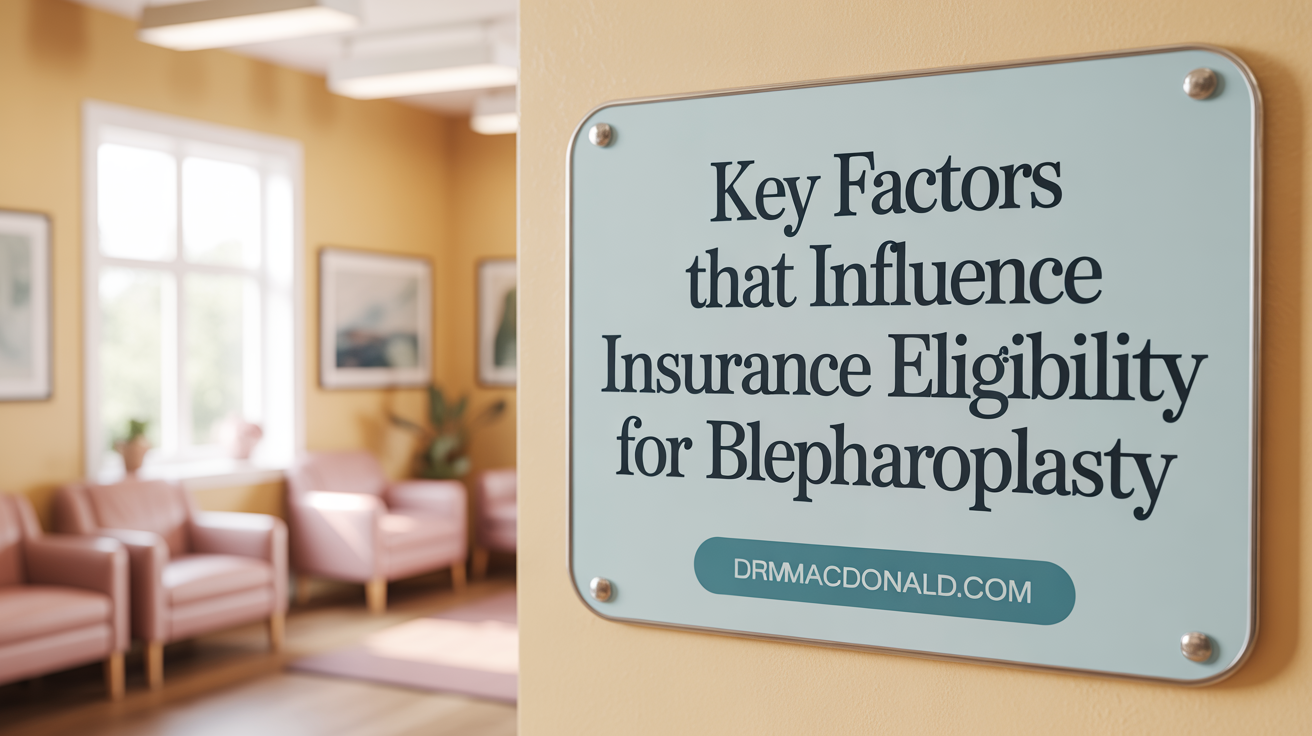
What factors influence coverage eligibility for blepharoplasty?
Insurance coverage for eyelid surgery, specifically blepharoplasty, hinges on the presence of a clear medical necessity. Essential criteria include documented eyelid drooping where the marginal reflex distance (MRD) is less than or equal to 2 millimeters. This measurement indicates significant eyelid ptosis that potentially obstructs vision.
A primary determinant is visual field loss. To qualify, patients must demonstrate a loss of at least 12 degrees or 30% of their upper visual field, caused by eyelid drooping. This impairment should be confirmed with a visual field test conducted by a licensed ophthalmologist.
Other qualifying conditions include congenital ptosis, trauma-induced eyelid deformities, thyroid eye disease affecting eyelid function, and chronic eyelid dermatitis that impairs vision. Supporting diagnostic tests such as high-resolution photographs and comprehensive eye evaluations are typically required to substantiate the medical necessity.
Furthermore, the process involves obtaining pre-authorization from the insurance provider, which includes presenting medical documentation and test results. Insurance providers evaluate all submitted evidence to determine if the procedure addresses an impairment that affects daily activities. The goal is to establish that surgery is necessary to restore or improve visual function rather than for cosmetic reasons.
How can patients qualify for eyelid surgery based on insurance criteria?
Patients seeking coverage need to provide robust evidence demonstrating functional impairment. A key test is the visual field assessment, which should quantify the extent of upper visual field loss caused by drooping eyelids.
According to insurance criteria, a visual field test must show a minimum loss of 12 degrees or 30% of the visual field in the upper eye region. These tests are typically performed with the eyelids in their natural position and with eyelids elevated or taped to assess the maximum possible visual field.
Supporting documentation from an ophthalmologist should include detailed medical history, clinical findings, and a diagnosis indicating that eyelid drooping significantly interferes with essential activities such as reading, driving, or performing daily tasks. High-quality photographs that illustrate eyelid position relative to the pupil, along with comprehensive medical reports, strengthen the case for insurance approval.
In summary, qualifying for insurance-covered eyelid surgery depends on demonstrating that the eyelid condition causes meaningful visual impairment supported by detailed clinical evidence. The process requires collaboration with ophthalmic specialists and thorough documentation to verify that the procedure addresses a genuine functional need.
Navigating the Insurance Approval Process and Cost Considerations
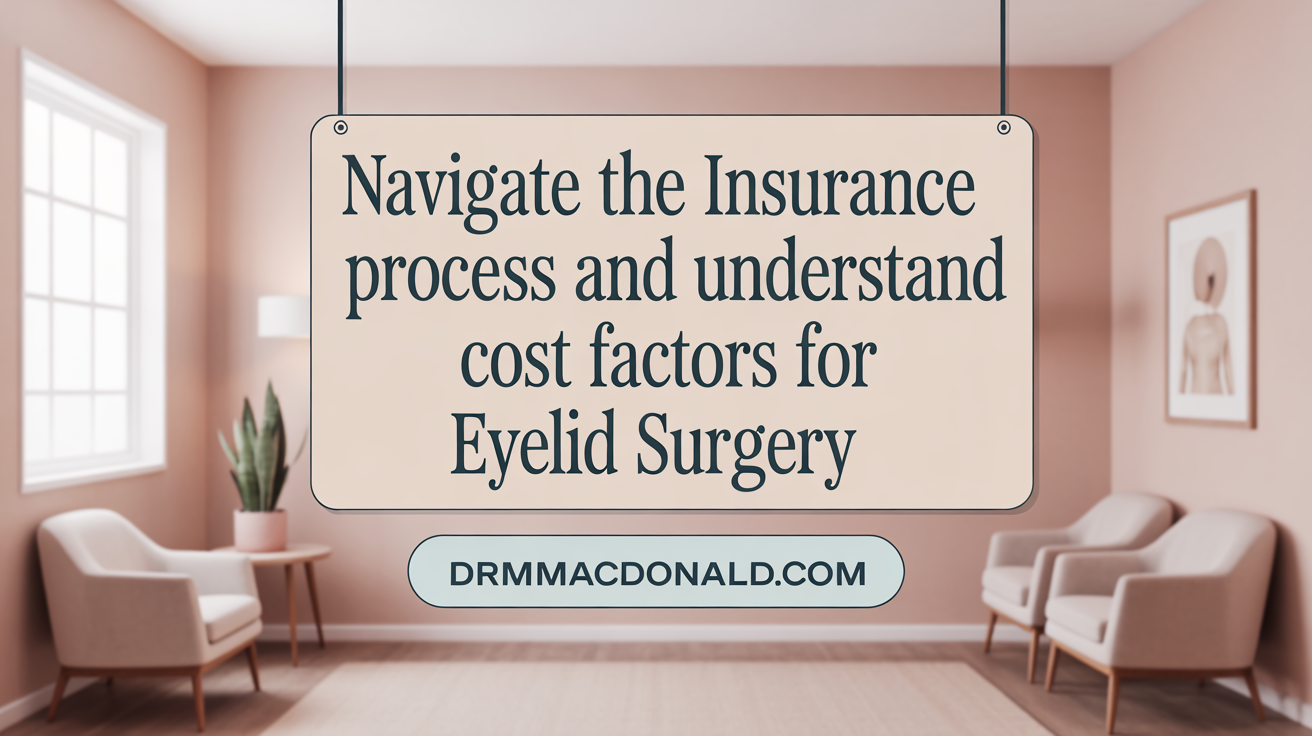
How does the insurance approval process work for eyelid surgery?
The process starts with gathering detailed medical evidence, including examinations, photographs, and visual field test results. These documents must demonstrate that the eyelid drooping causes significant vision impairment, typically a reduction of at least 12 degrees or 30% of the visual field.
A licensed ophthalmologist or surgeon evaluates the need and provides a report confirming the condition’s impact on function. The patient submits these documents to their insurance provider for pre-authorization, which assesses whether the procedure qualifies as medically necessary.
Pre-authorization offers an estimate of coverage but does not guarantee payment. Once approved, the patient can proceed with surgery, but final costs depend on individual insurance policies, deductibles, and copayments.
Insurance companies focus on functional impairment rather than cosmetic concern. Therefore, procedures aimed solely at aesthetic improvement are typically excluded from coverage. Patients should be prepared to submit comprehensive documentation and may appeal a denial if they believe their case meets medical necessity criteria.
Submission and review of medical evidence
Patients must provide a detailed medical history, physical exam notes, and evidence of eyelid drooping affecting vision. Visual field tests conducted by an ophthalmologist are crucial. High-resolution photographs showing eyelid position relative to the eye are also often necessary.
Diagnostic reports and any relevant imaging or assessments support the case, helping insurers evaluate whether the surgery addresses a functional problem.
Pre-authorization requirements and appeal options
Most insurance plans require a prior approval process before surgery. Once submitted, the insurer reviews the documentation to determine if the procedure qualifies for coverage based on their criteria.
If the claim is denied, patients can appeal by providing additional evidence or medical opinions supporting the medical necessity of the surgery. It’s advisable to work with healthcare providers familiar with insurance processes to strengthen the appeal.
Insurance coverage limits and out-of-pocket costs
Coverage varies depending on the insurer, specific plan, and the documented severity of impairment. Even when coverage is approved, out-of-pocket expenses such as copayments, deductibles, and co-insurance are common.
In cases where the surgery is deemed necessary for vision correction, insurance can cover a substantial portion of the cost. However, if the procedure is primarily cosmetic, the patient generally bears the full expense.
Difference in coverage between cosmetic and functional procedures
Insurance covers eyelid surgeries aimed at restoring or improving eyelid function, especially when drooping eyelids obstruct visual fields or cause discomfort. Conversely, purely cosmetic procedures, where the intent is aesthetic enhancement without functional impairment, are usually not reimbursed.
Understanding the distinction is crucial for patients pursuing eyelid surgery. Proper documentation and clinical evidence that highlight functional issues improve the chances of insurance approval and minimize out-of-pocket expenses.
Summary: Understanding Insurance Coverage for Eyelid Surgery
Insurance coverage for blepharoplasty hinges on demonstrating medical necessity rather than cosmetic desire. Patients with eyelid conditions causing functional impairments such as vision obstruction, eye strain, or headaches should seek thorough ophthalmologic evaluation, obtain documentation including visual field tests and photographs, and navigate the pre-authorization process with their insurer. Understanding eligibility factors and providing comprehensive evidence increases the likelihood of insurance support for needed eyelid surgery. Ultimately, clear communication with health providers and insurers is essential to secure coverage and manage costs effectively.
References
- When Blepharoplasty (Eyelid Surgery) Covered by OHIP?
- FAQ: Is Eyelid Surgery (Blepharoplasty) Covered by Insurance ...
- Understanding Insurance Coverage for Blepharoplasty - DLV Vision
- Does Insurance Cover Blepharoplasty or other Eyelid Surgery?
- Does Insurance Cover Blepharoplasty? - NVISION Eye Centers
- When Does Insurance Cover Eyelid Surgery? - Jeffrey M. Joseph
- When Will Insurance Pay For Eyelid Surgery? | Dr. Galanis
- When Does Insurance Cover Eyelid Surgery? | Dr Mahsa Sohrab
